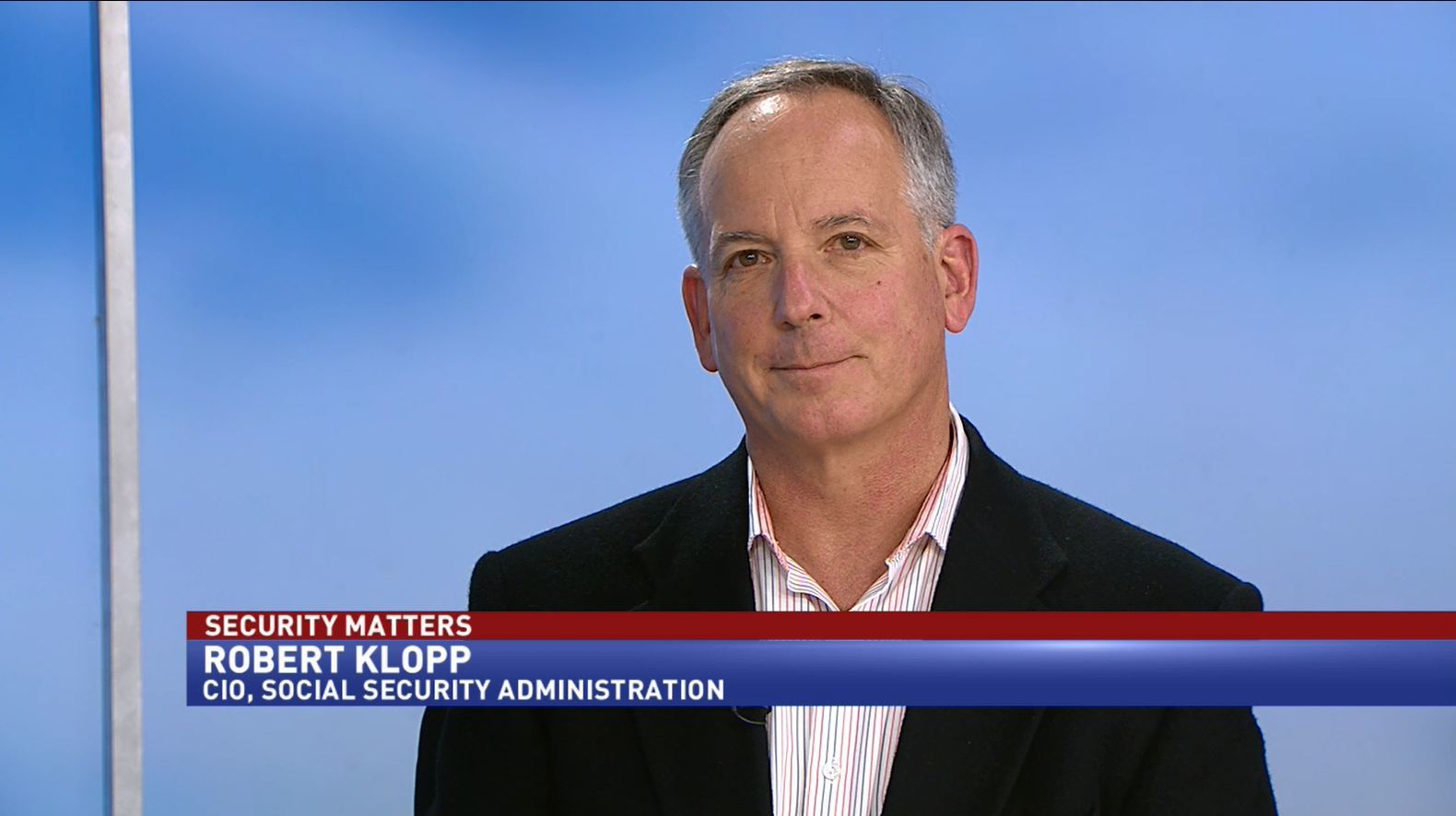What to expect: US IT trends in 2017 in the government and public sector
The USA is one of the main suppliers of information technology to the world market, and government and state structures of states have been working with IT for more than half a century. Therefore, it is interesting to look at the internal cuisine of federal and regional agencies (especially with the election of a new president), to find out their main problems and immediate plans.
Especially since the CIO-Feds provide very interesting answers, and sometimes unexpected explanations. For example, we very much remember the recognition that a significant part of government IT equipment in the United States from the 1960s to the present day still works “on 16 million lines of COBOL code and 7 million lines of Assembler”, as a result, to ensure modern cybersecurity is rather difficult .
We hope that this translation will be interesting and useful for you.

The cost of government IT in the United States represents an impressive part of the technical costs in general. Here are a couple of ideas about what taxpayer money will be spent on in 2017.
Today, the statement “The government should work like a business!” Is common. But how often does the chief executive and his entire administrative staff change every four years in business enterprises?
Yet IT in the public sector has a significant impact on the IT market as a whole. Government agencies are usually one of the largest, if not the largest employer in their region, be it federal, state, county, or individual city. Any knowledgeable supplier pays attention to him.
Although government agencies have a reputation for using outdated technology, they can also lead technology trends because of the size of the organization and the amount of data. "We were the first IBM client with a lot of data," said Rob Klopp, director of information technology at the Social Security Service (SSA) headquartered in Baltimore. According to SSA, his agency provides 5 percent of the gross domestic product of the United States.
In other words, from such state-owned enterprises to the market there is such a serious infusion that it is not possible to deny their influence on the development of IT-technology. Therefore, it will be useful to consider the main IT trends of 2017 at the federal, district levels and the level of individual cities.
Rising to the federal level
With the election of Donald Trump as president, the potential for changing federal trends in IT has increased. At least 10 IT directors in federal agencies are political appointments, which means they will be replaced by loyal new administrations (according to Jason Miller from Federal News Radio). Among them is Tony Scott, who came from VMware and was appointed by President Barack Obama as the third CIO (Chief Information Officer, Deputy General Director) in the United States.
Although they usually do not do this, even a federal agency CIO can voluntarily leave the post. Even if a CIO is not appointed for a political motive, its immediate superior may be appointed as such, which, of course, also determines the general course. The result may be a slowdown in federal IT development over the course of several months, while new people are appointed and grope for their feet.
Despite the possibility of serious upheavals, Klopp does not see global changes in major federal IT trends. “We see, as a rule, positive feedback on the new administration, and the only question is whether it will be funded or not,” he said. “This is not a question of advocacy, we have too many tasks — this is a question of priorities.”

So what are these trends? “There is a huge demand for cyber security,” says Klopp. “As threats build up, we are trying to increase our ability to defend against them as quickly as possible.” The emphasis is on creating advanced protection capabilities. ”
Another noticeable federal trend is IT upgrading, and SSA is one of the first in line to solve this problem. “In fact, we started using computer technology in the 1960s, when we had too much data,” explains Klopp. The problem is that most SSA works on legacy platforms, which are not so easy to update. “All of these systems operate on 16 million lines of COBOL code and 7 million lines of Assembler,” he says. “We have problems in order to find investments for the modernization of this system, since it has become unpopular to spend more and more money on government tasks.”
The age of systems only aggravates the state of cybersecurity, as they often need to be updated to increase protection, Klopp explains.
At the end of 2016, the US Congress passed a bill to provide funding for the modernization of IT. “It is expected that this bill will be very quickly transformed by the Congress,” says Klopp and adds that he hopes that Congress recognizes that the modernization of the IT infrastructure requires the same investments as the modernization of the usual infrastructure — roads and power grids.
No matter what happens, Klopp will not see this. The Obama administration hired Klopp in the private sector, where he worked for startups such as Greenplum. Now he is returning to his roots. “I was going to do this regardless of the election results,” he says. “During my work in the post, I completely reorganized the system and assembled my own team of federal-level professionals responsible for everything that happens. When I leave, these people will support the organization as long as the new administration appoints a new CIO. No one knows what will happen in the near future, whether it will take a year or a week, but the organization is ready to continue without me. ”
Statewide IT
State and district administrations did not have such large changes as in the federal one, but in some places the balance of power has changed on places. Somewhere they are still working on making the changes made after the previous elections, as well as on recovering from the global economic crisis.
According to Ed Toner, Nebraska CIO, one of the main trends in IT governance has been to cut costs and streamline operations through consolidation. “In 2016, we combined systems and technical support groups for the state network and for server administration,” says Toner. In 2017, he expects the continuation of emerging trends. “Consolidation processes in Nebraska increase the efficiency and quality of IT services. Successfully working with other government agencies to develop this initiative, we will complete the third and final stage of our annual consolidation plan: Desktop Support Q1 2017 ".

Ed Toner, Nebraska CIO
Governmental IT organizations at all levels are also forced to deal with the so-called "silver tsunami." When the economy was in recession, government officials who were facing retirement held on to their jobs; as the economy recovers, a whole wave of retirements is expected. At the same time, when hiring new employees, government IT organizations have to fight for every frame, because they offer lower wages and less interesting work than in the private sector.
Toner is also constantly dealing with this. “The work culture in Nebraska is changing as we try to provide more opportunities for young professionals,” he says, referring to the internship program. - Our agency employs at least 25 interns from state universities and local colleges who have been hired and are currently working for us as interns or were recruited to close these positions. They build their own ecosystem, a work environment that maintains high-level working enthusiasm and has a positive impact on the professional level of employees. ”
Situation at the district level
Not all government agencies can afford a special CIO, and this is one of the main problems of government IT at the city and district levels. City and municipal budgets are smaller, so the maintenance of these systems and their entire staff is not easy. And, as part of the state administration, city and county administrations may be limited in their powers. For example, some cities created a municipal broadband network in an effort to provide better Internet access for their citizens, but in some states laws have been passed prohibiting cities from doing so.
As in the case of federal and state IT, cybersecurity is a serious problem for urban and regional IT, especially if institutions cannot provide the necessary personnel at the right level. Therefore, city and county administrations can be considered as the most vulnerable to hacker attacks.
“The new wave of extortion and attacks on the Internet of Things (IoT) in the current cyberwar will force government IT to be on their guard and prepare for these threats in 2017,” predicts Brian D. Kelly, Portage County CIO in Ravenna, Ohio. - Cyber security experts and representatives of the FBI warn of a surge in extortion and cyber attacks in 2017. So at Portage, we are increasing our network monitoring capabilities, educating and informing employees, and also strengthening our cyber security program. ”

Brian D. Kelly, Portage County CIO
At the same time, since this is the closest level of government administration to people, cities and districts are able to have a noticeable impact on the lives of citizens. In addition, since city and county administrations are smaller than state and federal authorities, so program development is not so difficult. For example, in a number of cities, state-owned IT facilities were used to simplify the submission of documents, which was used to obtain business permits, to report on potholes, and Portage is no exception.
“In 2017, government IT will continue to focus on smart city projects, initiatives for building municipal broadband networks, connecting IoT, and expanding citizens’ online delivery and information services, ”predicts Kelly, who is also the executive director of GMIS International, IT leaders. - We see these trends in the municipal authorities of the United States and around the world. In Portage in 2017, we plan to explore municipal initiatives for creating common broadband gigabit networks with adjacent districts, as well as expanding e-government representation on the new web portal. ”
As they say, a government exists to help us, and IT will be a decisive factor in providing this assistance.
')
Source: https://habr.com/ru/post/322962/
All Articles